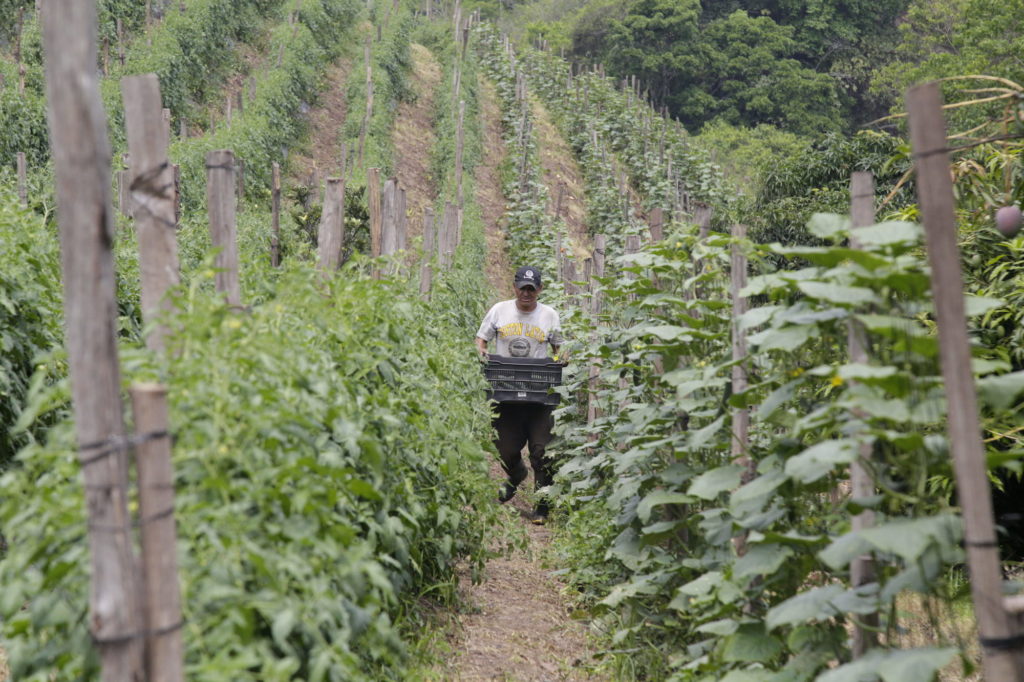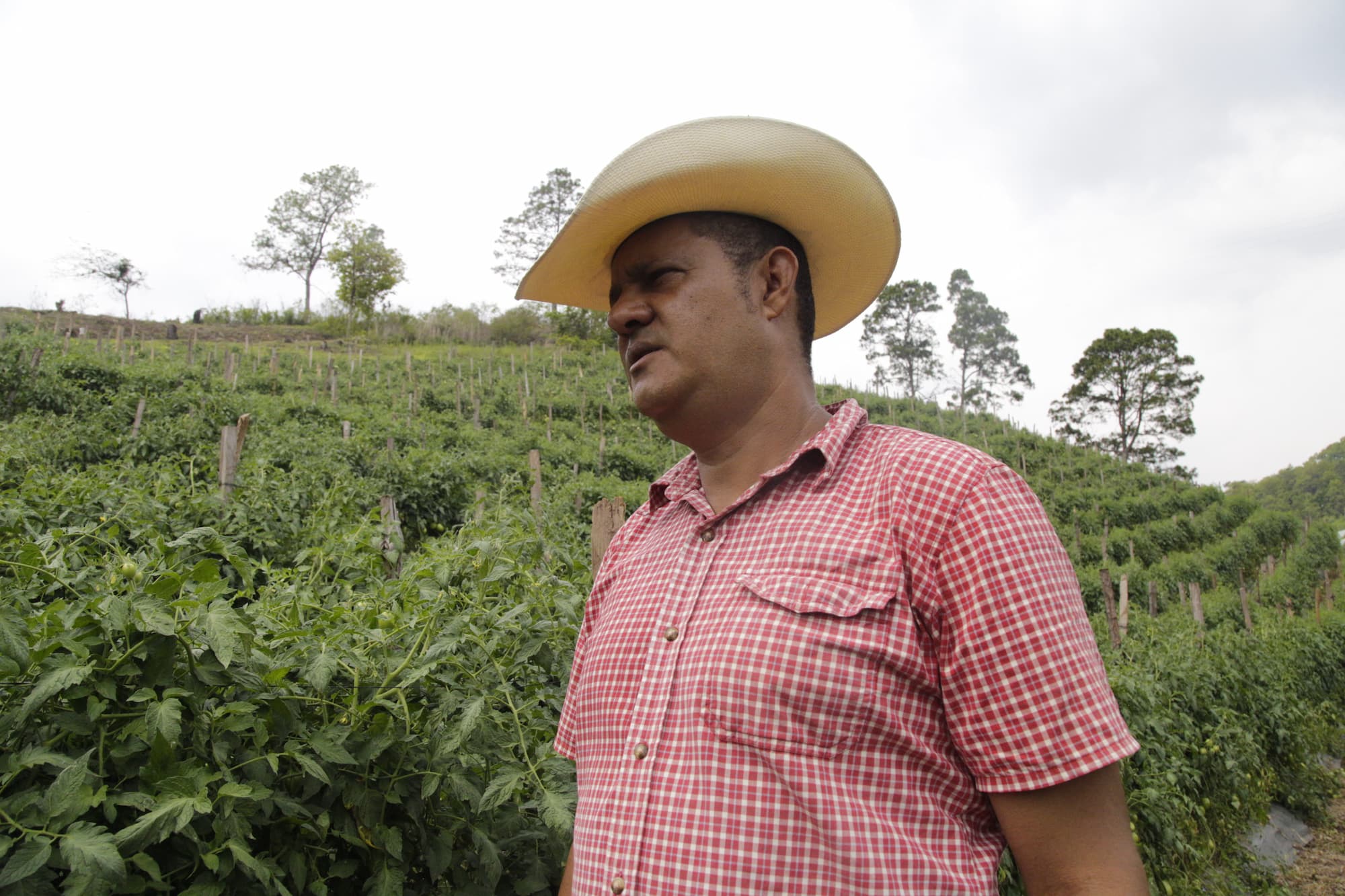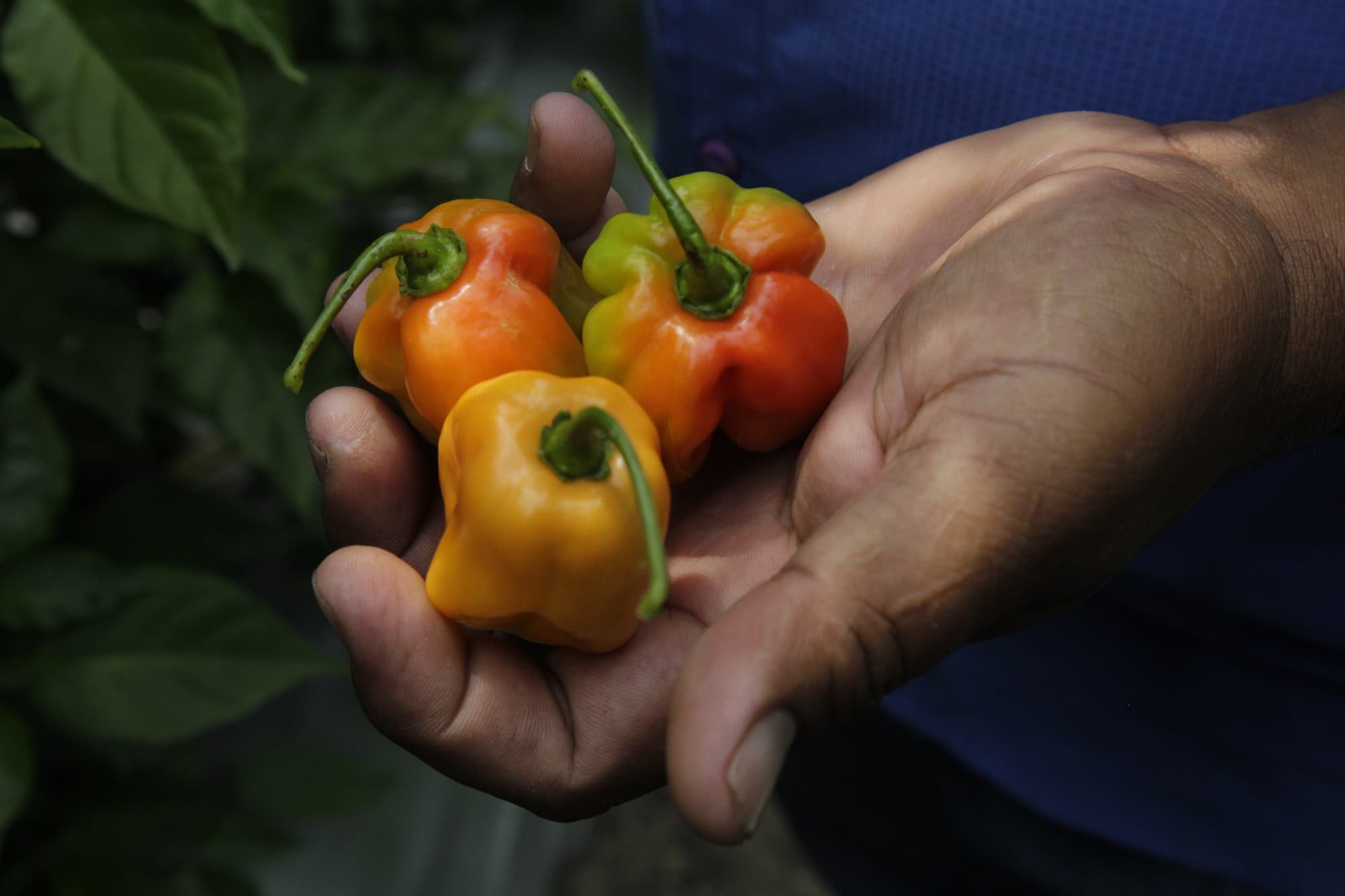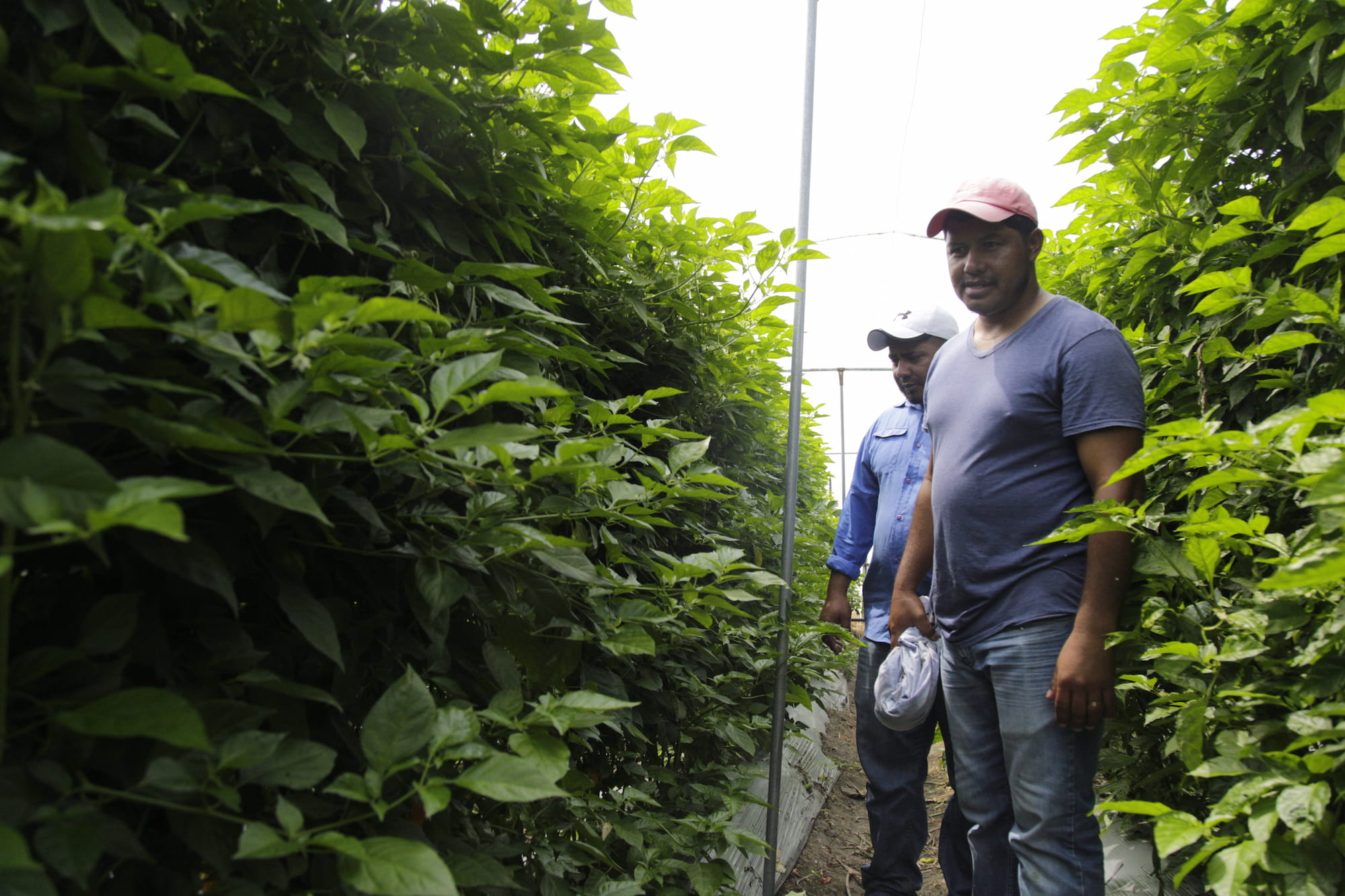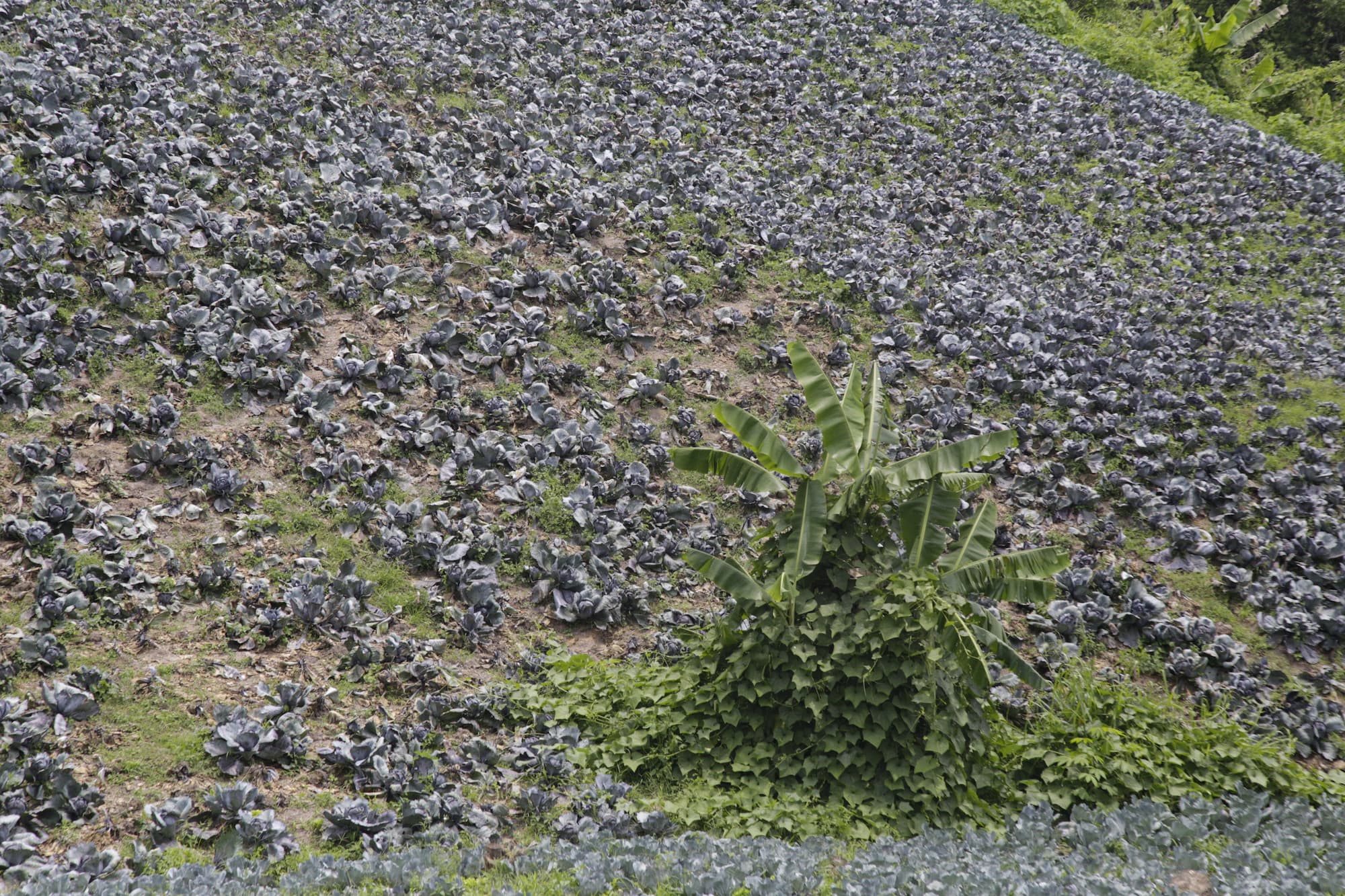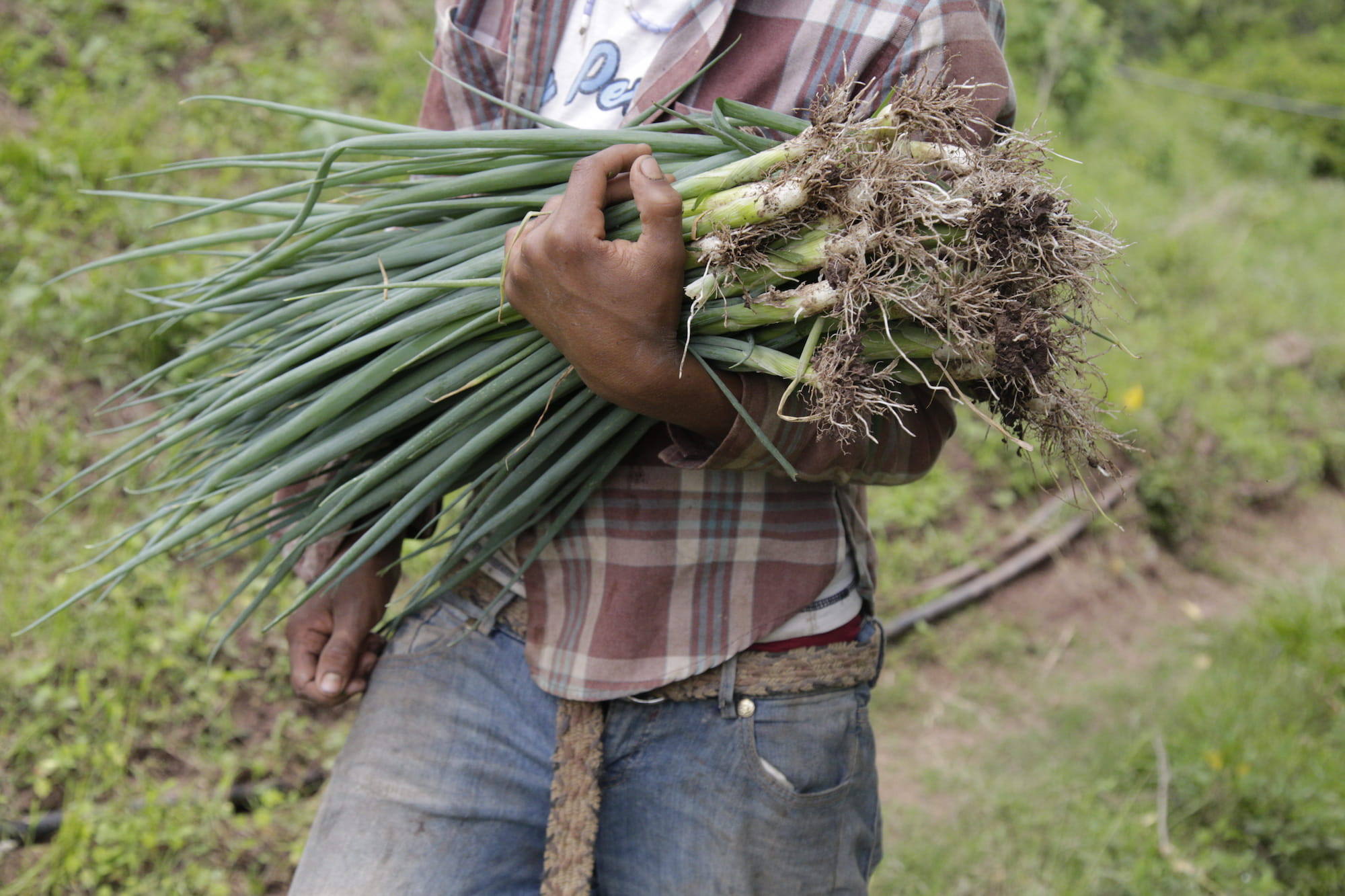The United Nations Food and Agriculture Organization (FAO) predicts that food insecurity could worsen in Honduras over the next few months. The Russian invasion of Ukraine has pushed up the cost of fertilizer and fuel, and small Honduran farmers are getting desperate and lack assistance from public agricultural programs. Meanwhile, Hondurans are paying more for an increasingly expensive basic food basket.
By María Celeste Maradiaga
Photos by Fernando Destephen
Óscar Cerrato, a 45-year-old farmer, lives just beyond San Juan del Rancho in El Guachipilin, a village in the municipality of Francisco Morazán. Cerrato cultivates tomatoes, cabbage, onions, and other vegetables on his small farm.
“On the other side of that stream is El Guachipilín,” Cerrato says as he shows us his lush tomato fields. It’s a verdant landscape with plenty of fresh air, unlike the capital city of Tegucigalpa, just 16 miles (25 kilometers) to the east.
Small farmers were already struggling before the current crisis, says Cerrato. The COVID-19 pandemic and tropical storms Eta and Iota in November 2020 hit small farmers hard. With no crop insurance for weather-related damages, their livelihoods became even more precarious.
El Ocotal is about 15 miles east of Tegucigalpa. There, Hipólito Raudales and Juan Carlos Urquía are also struggling to stay afloat by growing cucumbers, habanero peppers, cherry tomatoes, and other produce.
Although Urquía is only 39, years of working in the sun have prematurely aged his skin. Before the pandemic, he had invested the equivalent of nearly US$41,000 in eight greenhouses for his produce. But he was only able to recover US$12,000 of his investment due to the COVID-19 shutdowns. “First, I lost money because of the pandemic, and then the hurricanes took the rest,” said Urquía. Now, he is only able to use three of the greenhouses.
The greenhouses consist of plastic netting stretched over metal frames that protect the crops from pests and strong winds. A lower-cost version consists of plastic netting stretched over fence posts surrounding the crop.
Urquia said that he currently sells a pound of habanero peppers for US$1.30, a crop that should sell for US$1.63. He has also been forced to sell other crops at a discount before they rot.
The cost of shipping their products to Tegucigalpa has also risen 100%, from US$8 to US$16 per trip. Óscar Cerrato told us that all these cost pressures have forced him to lower the daily wage he is able to pay, and fewer and fewer farm workers are willing to work for him.
The estimated 385,000 small and medium-sized farmers in Honduras face an even greater challenge, according to the Center for the Study of Democracy (Centro de Estudio para la Democracia – CESPAD). Despite providing 64% of the jobs in rural Honduras, they have little control over the value chain and are forced to sell products like basic grains and vegetables to intermediaries who set low prices for the goods.
The 300% increase in the cost of fertilizer is causing one of the worst crises in the country’s agricultural sector and is harming farmers, their communities, and the country as a whole.
In the plan for her first 100 days in office, President Xiomara Castro promised to help farmers with grants that “must be distributed equitably to small farmers and campesinos for the primary harvest period. Then we will increase our grant coverage for the secondary harvest to include all types of farmers so we can increase food production. We have to win the war against hunger,” said Castro.
The farmers told us that these grants have been used in the past to reward people for their political support. Politicians have come to El Guachipilín, El Ocotal, and other farming communities offering sacks of fertilizer in exchange for votes. While they don’t blame the Castro government for things that happened in the past, they want things to change and hope that the farming grants will not become politicized in the future.
Rafael Sarmiento is a legislator and president of the National Congress’ Committee on Agriculture and Livestock. He heads the Libre Party congressional delegation and is also a relative of the president. In light of the country’s food crisis, Sarmiento says that he is only waiting for a financial report from the government’s agricultural bank, BANADESA, before he aggressively begins distributing grants to farmers and ranchers.
But the three small farmers we interviewed have never qualified for a BANADESA loan, and think that this urgent funding program will once again only benefit large farmers. “To qualify for a BANADESA loan, we have to pledge collateral that we don’t have. Farmers who are able to pledge collateral like a tractor or other farm machinery already have access to credit. Small farmers like us have to work our fingers to the bone just to eke out a meager living,” said Urquía.
Raudales mentioned the importance of crop insurance. “The government hasn’t offered small farmers any crop insurance, so we don’t have support from anyone when we lose our crops,” he said.
Several vegetable farmers told us that only a few small farmers apply to the credit programs promoted by the Ministry of Agriculture and Livestock and that these programs are oriented toward basic grain producers, not other types of crops. Agriculture and Livestock Minister Laura Suazo and Deputy Minister Roy Lazo both declined our requests for interviews.
“They [the government] sometimes give away sacks of corn, beans, and fertilizer, and call it an agricultural subsidy. But we plant our own corn and beans—we don’t need that kind of help to support our families and provide for schooling and food. We farm for a living, and produce peppers, tomatoes, cucumbers, and more,” said Juan Carlos Urquía, who believes that vegetables are just as important as basic grains.
“The government talks all the time about corn, beans, and rice as if that’s all we eat,” laughs Urquía. He maintains a sunny disposition despite the dire situation and patiently explains the challenges facing small farmers.
The war in Ukraine is intensifying the food crisis
The Hunger Hotspots report issued by the FAO in conjunction with the World Food Program (WFP) describes a deteriorating level of food insecurity in three Latin American countries: Colombia, Haiti, and Honduras. The lack of rain in October and November last year combined with the pandemic intensified the ongoing food crisis in Honduras, especially in the country’s Dry Corridor, where humanitarian assistance will soon be needed.
The war in Ukraine is expected to make a dire situation even worse. Stephanie Hochstetter, WFP’s representative in Honduras, explained in a recent radio interview that the latest Hunger Hotspots report was released before Russia invaded Ukraine, so the impacts of the war on the rest of the world have not yet been quantified.
Economist Claudio Salgado says that the war in Ukraine is aggravating existing problems in the global economy caused by the pandemic, such as supply chain disruptions, shipping cost increases, climate change, and rising food and fuel prices.
He said that Russia has the capacity to produce 10 million barrels of oil a day, seven million of which are exported. But the oil embargo imposed by many countries as a sanction for Russia’s invasion of Ukraine has caused fuel prices to skyrocket in Europe and around the world. Hondurans and other countries are having a difficult time finding other fuel sources, which has triggered a worldwide crisis. Furthermore, Russia and Ukraine together supply around 25% of the world’s fertilizers, said Salgado.
Even if the war in Ukraine ends tomorrow, Salgado believes that the aftereffects will be felt for a long time. To soften the impact of this external shock to the Honduran economy, he proposes a government subsidy of 1000 lempiras (US$4) of the cost of a barrel of gasoline and a subsidy of 50% of the increase in the cost of diesel. He also suggests that the government implement measures to reduce fuel consumption.
“As long as the war goes on, it will cause more poverty, unemployment, hardship, and abuse in Honduras,” said Salgado.
Stephanie Hochstetter predicts that a full-blown food emergency will soon affect approximately 28% of the Honduran population in the departments of Gracias a Dios, La Paz, Lempira, Santa Bárbara, Intibucá, and in the country’s more populated areas like Francisco Morazán, Cortés, Yoro, and Olancho.
According to the WFP’s Integrated Food Security Phase Classification and the Central American Integration System (SICA), at least 2.6 million Hondurans will face an acute food emergency.
Hochstetter believes that food will be very scarce in the outskirts of the country’s urban areas like the Sula Valley because unemployment has increased in these areas due to the lagging effects of the COVID-19 pandemic and rising prices. Farmers in eastern Honduras and in the Dry Corridor will be heavily affected, along with the women and girls in these areas who usually make the decisions about household food consumption.
“It’s obvious to all of us who shop in supermarkets and fill up our cars with gas, and to those who transport products around the country, that life in Honduras is more difficult and expensive these days,” said Hochstetter.

